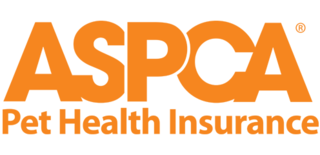5 Best Cheap Pet Insurance Companies

Pet insurance works a lot like health insurance for people. And as when insuring the humans in your home, it pays to shop around if you decide you want health coverage for your dog or cat.
Premiums for pet insurance policies range widely by company --- by more than $150 extra a year to insure a cat and upwards of $350 a year for a dog, we found when we examined pet insurance costs. Companies also vary in how they price certain provisions of a policy, and the conditions they impose for them.
Our list of pet insurance companies was comprised by evaluating all of these factors. We looked specifically for reasonable rates and considered deductibles, sign-up fees and discounts, too. The quality of coverage for your money played a major role in our process.
To make sure your pet and your wallet are covered for vet bills, read on to learn about Money’s picks for companies that offer the most affordable pet insurance. For more pet insurance reviews, click over to Money’s Best Pet Insurance Companies of 2022.
Our Top Picks for Cheap Pet Insurance Companies
- Embrace Pet Insurance: Best for Diminishing Deductibles
- Fetch Pet Insurance: Best for Avoiding Pre-Existing Condition Liability
- ASPCA Pet Health Insurance: Best for Multi-Pet Discount
- Figo Pet Insurance: Best for 100% Reimbursement
- Healthy Paws Pet Insurance: Best for Lifetime Value
Best Cheap Pet Insurance Reviews
Embrace Pet Insurance: Best for Diminishing Deductibles
| Pros | Cons |
| Diminishing deductibles | An enrollment fee of $25 |
| Vet exam fees are covered | Monthly payments are charged a recurring $1 transaction fee |
| Customizable plans to accommodate different budgets | A minimum deductible of $200 |
| Includes hospitalization | |
| Distinguishes between curable and incurable pre-existing conditions |
As can be the case with your own health insurance, pet policies come with a deductible — typically between $250 and $1,000 — that must be met every year before reimbursement begins.
With an Embrace Pet Insurance policy, deductibles decrease the longer there hasn’t been a claim. These diminishing deductibles are reduced by $50 every year that you don’t file a claim on behalf of your pet. If your pet is sufficiently healthy and suffers no accidents, your deductible can eventually be lowered to $0.
Embrace Pet Insurance also allows you to customize certain parts of your policy such as the reimbursement percentage. As a result, you can get the coverage you need while staying within your budget.
Fetch Pet Insurance: Best for Avoiding Pre-Existing Condition Liability
| Pros | Cons |
| Coverage can begin at six weeks | No discounts for multiple pets |
| A sign-up fee is not required | Preventive care plans are not available |
| Sick visit exam fees are covered | Routine care procedures are not covered |
| No lifetime claims limit |
Pre-existing conditions are not typically covered by any pet insurance plans. What’s more, depending on the company, a lot of medical issues may be considered to be pre-existing. One best way to avoid this is by insuring your pet when they are as young as possible.
While accident and illness issues — the heart of coverage for most policies — are rare during the puppy years, coverage can be initiated then.
With Fetch Pet Insurance, you can insure your pet as early as six weeks old — an unusually young age. At this point in a pet’s life, a lot of health issues that could be considered pre-existing, such as congenital conditions, have not yet presented themselves. As such, you’ll have greater assurance of having a policy later, when you most need it. You could (by adding an extra monthly payment) also enjoy preventative coverage during the puppy or kitten years when a lot of wellness care (such as vaccinations) is needed.
ASPCA Pet Health Insurance: Best for Multi-Pet Discount
| Pros | Cons |
| A 10% discount for each pet added to your policy | At 14 days, the accident waiting period is longer than some competitors |
| Thirty-day money-back guarantee (so long as no claims have been filed) | Wellness coverage has an annual coverage limit of $450. |
| Coverage includes prescription medication | |
| All pets are eligible regardless of health conditions |
ASPCA (American Society for the Prevention of Cruelty to Animals) Pet Health Insurance offers you a 10% discount for each additional pet on your insurance policy. For policyholders who have two or more pets in their household, this is a plus.
ASPCA coverage might also be particularly attractive to cat owners, who studies have shown have a tendency to own multiple felines.
Another stand-out feature of ASPCA pet insurance is the fact that it's among the policies that cover prescription medications. As anyone who owns a pet that requires medication will verify, these costs can really pile up over time.
Although ASPCA’s accident-only plan is cheaper by industry standards, it covers less than their accident and illness plan. For pet parents who need more, ASPCA also offers an unlimited annual benefit option.
Figo Pet Insurance: Best for 100% Reimbursement
| Pros | Cons |
| Visit any vet in the United States, Canada, and Puerto Rico | A $2 monthly service fee is charged unless you pay annually |
| Thirty-day money-back guarantee (so long as no claims have been filed) | No wellness plan available |
| No pet age limits; good for older pets | Exam fees are not included |
| Includes alternative treatments |
One hundred percent reimbursement means you will not have to pay anything else out of pocket every year, once you satisfy your deductible. Of all the pet insurance companies that offer a 100% reimbursement rate, Figo Pet Insurance is among the cheapest. They also offer easy-to-understand comprehensive coverage, along with the option to customize your own plan by setting a reimbursement percentage, deductible amount, and other possible add-ons. Plans even include alternative therapies like acupuncture and chiropractic care.
Figo also stands out for its unique mobile app called Pet Cloud, offering 24/7 virtual vet visits. This feature is included with all plans at no additional cost and provides access to a live veterinarian for checkups and other advice at any time of the day or night. This is a good feature for tech-savvy pet owners looking for veterinary care.
Healthy Paws: Best for Lifetime Value
| Pros | Cons |
| Unlimited annual and lifetime coverage | Some age restrictions |
| Most claims (99%) are processed in two days | Exam fees are not included |
| Premiums start around $15/month for cat insurance and $20/month for dog insurance | Only one plan available |
| Hip dysplasia is covered if enrolled before the pet’s age reaches six |
Healthy Paws has no payment caps on all their plans, meaning that once you pay the deductible, there is no monthly or annual limit on the amount that the company will reimburse you. This lack of limits may save you a considerable amount of money during the lifetime of your pet, especially if it develops a serious or long-term condition.
Conveniently, claims can be submitted via email, fax, website, or mobile app. Policyholders may receive reimbursements, via mailed check or direct deposit. Also, Healthy Paws claims that 99% of these reimbursements are processed within just two days.
Cheap Pet Insurance Guide
What Does Pet Insurance Cover?
What will be reimbursed under your pet insurance depends on the policy you choose, and what it does and doesn’t cover. The three main areas of insurance coverage are illness, injuries, and wellness.
Insurers typically combine the two areas of acute care into combined “accident and illness” policies, the most popular of the coverage options. The illness coverage ranges from mild accidents like sprains to more serious issues like cancer treatments. Covered accidents include both self-inflicted injuries, such as the pet swallowing a foreign object, to such mishaps as car accidents.
Most if not all pet insurers do not cover pre-existing conditions. Some companies also have a list of conditions that are excluded from coverage.
That said, just because your pet has a pre-existing condition, this does not keep them from becoming insured for all other perils.
How To Pay Less for Pet Insurance
Insure your pet early
Making sure your pet is insured as soon as possible is key. Once your pet is a few months old, certain health issues may arise, such as congenital or hereditary conditions, making them more expensive to insure.
Furthermore, these pre-existing conditions will most likely not be covered by any pet insurance provider, regardless of the pet's age. Some companies even enforce a waiting period after enrollment that must elapse before your pet can enjoy full coverage.
Naturally, starting early with coverage will likely mean you are paying premiums for more years and could result in higher lifetime payments.
Maintain a healthy pet
Make sure to stay up to date with your pet’s vaccinations, heartworm medication, and any flea and tick protection. The better you care for your pet, the healthier they will be. Even if your pet insurance doesn't reimburse for preventive care, as is the case for most policies, providing it to your pet could give you peace of mind, and might save you a lot of grief, money, and time in the long run.
Some companies offer diminishing premiums the longer time passes without a claim. Other companies will give you a credit if your pet remains healthy for a certain length of time, thereby incentivizing you to take care of your pet and save money, all at the same time.
Forget monthly, pay annually
Similar to other insurance companies, pet insurance providers allow the option to pay for their coverage in a single, annual payment. And many pet insurance companies offer a discount if you opt to pay in this way, rather than every month or every six months.
This offers the additional benefit of paying less while guaranteeing that your pet will be covered throughout the entire year, with no risk of coverage lapsing if you forget to make your monthly premium payment.
A higher deductible means lower premiums
If your insurer allows for some flexibility with your deductibles (and most do), you may want to set them at a higher amount. Doing that typically allows your premiums to come down.
The only drawback to this approach, obviously, is that if your pet should have an accident or need an emergency procedure, you will have to cover the cost of the deductible, however high.
The Costs Associated with Pet Insurance Coverage
The average monthly price of pet insurance is $47 for dogs and $29.50 for cats, according to the North American Pet Health Insurance Association.
How much you end up paying in premiums will depend on a variety of factors, including your pet’s breed, age, gender, and where you reside. Different plans may have varying limits and coverages.
That said, a lot of (if not most) pet insurance companies operate on a reimbursement model, so the initial costs at the vet are out-of-pocket. The insurer then reimburses you the cost minus the deductible or copay.
Whether pet insurance will be a cost-effective alternative depends on your particular situation, including your ability and inclination to pay very large vet bills — which is when a policy offers the greatest potential benefit. When evaluating a policy, keep in mind the cost as well as the potential benefits.
Those costs include that of the co-payment you’ll have to contribute, typically of between 10% and 30% of the bill, after the deductible has been met.
If your pet had a pre-existing condition when you bought the insurance, it will not be covered under the policy. This means you'll have to pay full price for any procedure.
By doing the math on these considerations, you can determine whether a pet insurance policy will benefit your pet and your wallet.
Cheap Pet Insurance FAQs
When is the best time to insure my pet?
One argument is that the best time to insure your pet is as soon as you’re able. Some companies allow you to insure your pets when they’re only a few weeks old. This reduces the cost of your premium, at least initially, because there’s only a slim chance of a pet needing acute care at a young age.
However, since serious accidents and illness are comparatively rare for the first few years in the life of a dog or cat, there’s also an argument to delay coverage. There’s a risk of being shut out of coverage due to the development of a pre-existing condition, but you will otherwise wind up spending less in premiums over the lifetime of the pet.
Does pet insurance cover routine care?
Some pet insurance policies cover routine care such as annual checkups. Typically, they are considered comprehensive care plans and include not only accident and illness coverage but preventive and wellness care. Premiums are typically higher than for accident and illness policies.
Is pet insurance tax-deductible?
In most cases, pet insurance is not tax-deductible. There are some exceptions, though, for guide dogs or service animals that help disabled individuals. Pets deemed emotional support animals cannot be claimed on your tax forms.
What are the risks if I don’t insure my pet?
The biggest risk of not insuring your pet is having to pay the full cost of very high medical fees in the event your pet develops a serious condition such as cancer or has a serious accident, such as being struck by a car.
Worse yet is not being able to meet those financial obligations and being forced to put down your pet.
However, keep in mind that the likelihood of such a condition developing is low, statistically speaking, and that very high vet bills will also trigger very high co-payments on your part. For example, $10,000 in bills to treat cancer — which is a plausible total — would require you to contribute anywhere from $1,000 to $3,000 to that cost, depending on the percentage of reimbursement under your policy.
How We Chose the Best Cheap Pet Insurance
To put together our list of The 5 Best Cheap Pet Insurance, we researched premiums and policy provisions for a wide variety of pet insurance providers. For companies to meet our requirements, they needed to offer valuable features at affordable and competitive prices. We took into consideration both short-term savings like monthly premiums and long-term factors such as lifetime limits.
What you pay to insure your pet depends entirely on your particular circumstances. With that in mind, we looked at average rates and pricing, flexibility with premiums and annual deductibles, and any potential limits on reimbursements to policyholders.
For more pet insurance reviews, including Trupanion, Nationwide, PetFirst, TrustedPals, Pets Best, 24PetWatch, Hartville, and Pet Assure, check out Money’s Best Pet Insurance Companies of 2022.
Summary of Money's Best Cheap Pet Insurance
- Embrace Pet Insurance: Best for Diminishing Deductibles
- Fetch Pet Insurance: Best for Avoiding Pre-Existing Condition Liability
- ASPCA Pet Health Insurance: Best for Multi-Pet Discount
- Figo Pet Insurance: Best for 100% Reimbursement
- Healthy Paws Pet Insurance: Best for Lifetime Value





